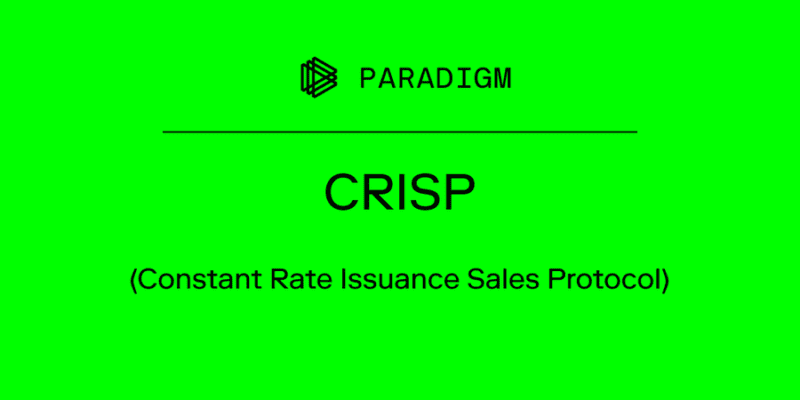Quick take:
- CRISP would adjust the price of NFTs according to sales rate.
- CRISP aims to sell NFTs at a targeted rate over time.
- Twitter users have pointed out the mechanism’s similarity to a Dutch auction.
Justin Roiland, the co-creator of adult animated sci-fi series Rick and Morty, is collaborating with a protocol designer and research engineer from crypto investment firm Paradigm on a new NFT pricing mechanism.
Called the Constant Rate Issuance Sales Protocol (CRISP), the mechanism was created with the user experience of NFT buyers in mind. It would let users buy NFTs whenever they want instead of having to wait for an auction to end.
With CRISP, the “buy it now” prices of NFTs would increase or decrease based on demand.
“If we want to sell 100 NFTs per day but are on pace to sell only 10, CRISP will slowly decay the “buy it now” price. If we want to sell 100 NFTs per day but are on pace to sell 200, CRISP will rapidly increase the “buy it now” price with every new sell,” CRISP’s research paper states.
“CRISP tracks the rate at which NFTs are being sold, and compares it to a target rate. When NFTs are being sold too quickly relative to the target rate, we want to be able to adjust prices quickly. The higher the sales rate compared to the target rate, the faster we want to raise prices,” the research paper continues.
This would either increase revenue or reduce demand for the NFT project to stabilise the NFT supply.
On the other hand, CRISP does not want to hastily lower prices when demand decreases. Instead, it would decay prices slowly over time as there had been sufficient demand in the past to support the current price point.
If the sales rate of the NFT project drops below target, CRISP will charge less for the next NFT, making it a more attractive purchase.
In the pictured example, CRISP is targeting one sale per 100 blocks.
— (Dave White)² (@_Dave__White_) January 25, 2022
At first, sales are too frequent, so CRISP raises the price.
When sales slow down, CRISP lowers the price until they stabilize at the desired rate. pic.twitter.com/TFyXWTg0Nr
The mechanism aims to sell NFTs at a targeted rate over time. Paradigm’s protocol designer Dave White provided an example of how CRISP works, saying “when sales slow down, CRISP lowers the price until they stabilize at the desired rate.”
In response to Dave White’s tweet about CRISP, Twitter users have compared the mechanism to a Dutch auction market structure, in which the price of an item starts high and is then successively lowered until it gets a bid or reaches a reserve price.
This is not Justin Roiland’s first rodeo in the NFT space. Last January, Decrypt reported that Roiland’s debut NFT art collection was sold for over 1,300 ETH, with part of the proceeds “going directly to help the homeless people in Los Angeles.“
Stay up to date:





